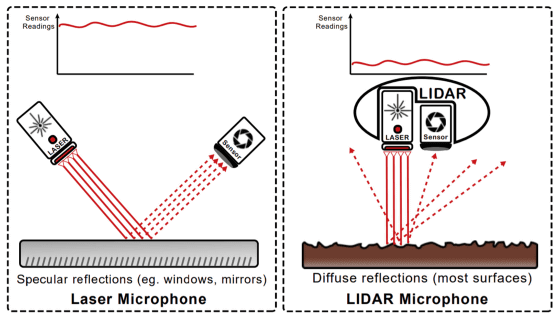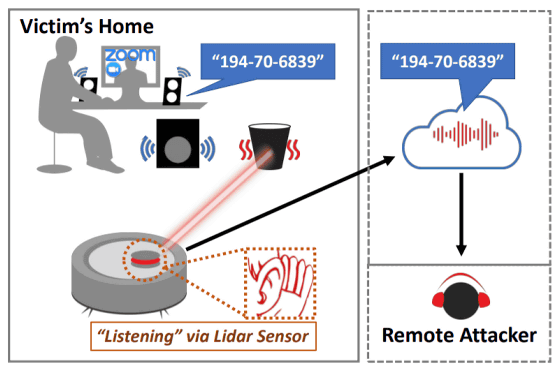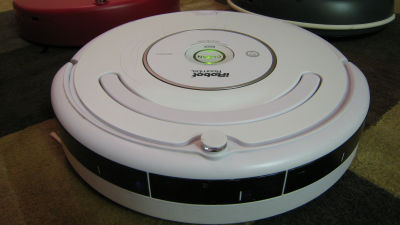There is a risk of eavesdropping using a robot vacuum cleaner without a microphone

Robot vacuums generally don't have a microphone, but researchers can use the laser-based navigation system used by robot vacuums to talk and talk in a room with a robot vacuum. We succeeded in reproducing the sound of the TV program that was being broadcast. From this, researchers warn that there is a risk of eavesdropping without the owner's knowledge.
Spying with Your Robot Vacuum Cleaner: Eavesdropping via Lidar Sensors
(PDF file)
Could your vacuum be listening to you? Researchers hacked a robotic vacuum cleaner to record speech and music remotely --ScienceDaily
https://www.sciencedaily.com/releases/2020/11/201117210102.htm
Some popular robot vacuum cleaners use LIDAR , a remote sensing system that uses light. According to a research team of Nirupam Roy of the University of Maryland and Jun Han of the University of Singapore, a robot vacuum cleaner using LIDAR can be used for eavesdropping even if it is not equipped with a microphone.
A robot vacuum cleaner equipped with a LIDAR navigation stem irradiates a room with a laser and detects the reflected and returned signal. This signal causes the robot vacuum to create a map and recognize where obstacles are.
It has been pointed out that there is a risk of information leakage because the maps created by robot vacuum cleaners at this time are generally stored in the cloud. This information includes 'house size' that predicts the user's income, as well as other lifestyle-related information, which may eventually be used for marketing by advertisers. However, in this research, researchers have shown that in addition to the above, 'voice information' may be leaked to the outside.
Eavesdropping using a laser like LIDAR is not new. Sound waves vibrate an object, but this vibration also causes a slight change in the 'light that bounces off the object.' Laser microphones used in espionage in the 1940s were able to reproduce sound waves from these changes. However, the problem with laser microphones was that they had to bounce off something as smooth as a glass window.
On the other hand, in the case of LIDAR, the shape and density of the reflected target do not matter. The signal received by the robot vacuum cleaner is a part of the sound wave to be reproduced, but researchers have experimented whether the entire sound wave can be reproduced from this part of the signal.

Researchers first hack a robot vacuum and control the position where the laser beam is emitted. Then, the data received by the robot vacuum was sent to their laptop via Wi-Fi without disturbing the navigation system.
After that, the researchers conducted an eavesdropping experiment on two things, 'a voice that a person flowing through a computer speaker counts numbers' and 'a voice of a TV program'. With various items such as trash cans, cardboard boxes, take-out food containers, and plastic bags placed in the room, the signals received by the robot vacuum cleaner are analyzed by deep learning algorithms learned about human voices and TV programs. As a result, it was possible to identify the number counted with 90% accuracy. Similarly, it seems that it was possible to identify TV programs with an accuracy of 90% or more. Researchers have named the system used in this experiment 'Lidar Phone.'

'Given that many of us order food over the phone and hold meetings over PCs, this kind of threat can be more important than ever. About credit cards and banks over the phone. I often talk. '' But what's more worrisome is the leak of information such as 'how many hours a day you work' and 'what is the political position you can read from the TV show you're watching?' This information is very important when trying to target a particular message or manipulate an election, 'Roy commented.
Researchers also point out that LIDAR is just one example of a vulnerability used for espionage, and infrared sensors used for face recognition on smartphones also have the same risk.
Related Posts:
in Science, Posted by darkhorse_log







